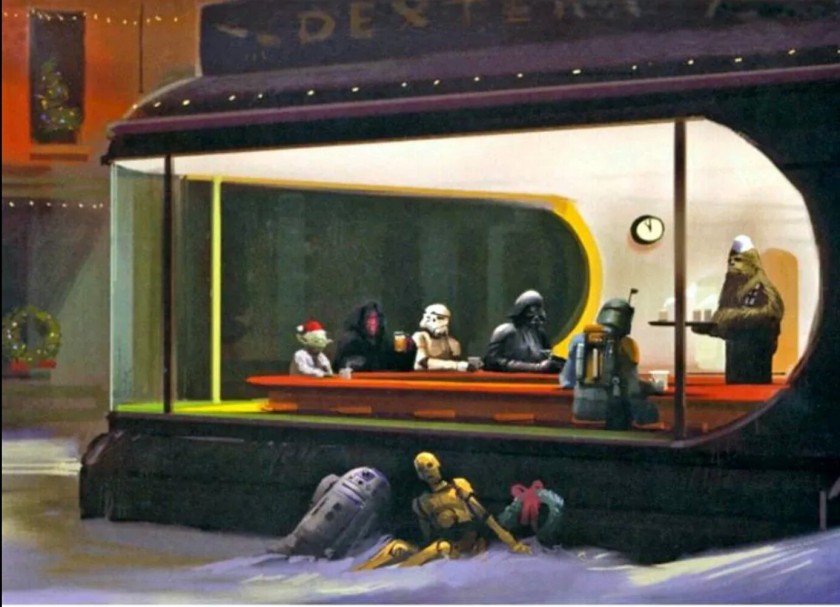Savoring Gotham in Edward Hopper Paintings + A Star Wars Rant
I’m thrilled to have written a few entries in the newly published Savoring Gotham: A Food Lover’s Companion to New York City, edited by Andrew F. Smith. As I flip through this tome—brimming with stories about Gotham’s notable foods and beverages, restaurants and bars, historical sites and events, cuisines, personalities, and brands from throughout the city’s five boroughs—one of my favorite entries so far is on Edward Hopper’s paintings of New York City food life. Depicting at times eerily quiet moments with minimal action between human figures, Hopper’s subject matter often drew from urban sites of quotidian America life, including food spaces—modest restaurants, automats, coffee shops, and chop suey joints—which Hopper frequented often with his wife. His paintings use these culinary locales, however, to express the common themes that mark his body of work: anonymity, anxiety, pensiveness, loneliness, and isolation. Hopper’s work critiques the promises of an abundant, fast-paced, cosmopolitan life in the big city, showing how the easy availability of food and drink at all times of the day and night might not lead to contentment. Instead, it fosters dissatisfaction and unease. More isn’t better. …


